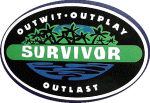 The Approach
The Approach
A few weeks ago a number of factors all convened so that I spent 5 days playing 99 holes of golf (see here). It was fun, but I’m ok if I don’t hold a golf club in my hands for a little while.
Let’s preface by stating that I’m not an avid golfer nor am I a very good golfer. I’m average. I usually get out 3 to 4 times a year. I can talk the talk, I do some things well, and others not so well. One of the things that I was doing well during those five days was hitting my 9-iron.
And I was hitting it well.
On a pretty consistent basis I was hitting the ball between 140 and 170 yards with my 9-iron – and they were mostly straight (which is a big deal for me). And once* I put one out there about 185 yards (*it was downhill and the wind was behind me). Put this in perspective, according to Brent Kelly at About.com the average men’s 9-iron distance is between 95 and 135 yards. You would need to move up to a 5-iron to reach the average distance I was getting with my nine.
Of course I was hitting most of my other clubs poorly. I’d top my driver and it would bounce out 30 yards. I’d slice my 3-iron into the trees. I’d hit my five iron, but it would fade left and only go about 100 yards. I’d totally duff my 3-wood.
So what did I do?
I ended up just playing with my 9-iron and putter. Honestly. It didn’t matter if it was a par 3 140 yard hole or if it was a monster 540 par 5 – I’d pull out my 9-iron and shoot.
And you know what…I played better than I usually do. We used many of my shots in the scramble competition. I won my head to head match. Overall, I did pretty well using just my 9-iron.
Therein lies the problem…
I did pretty well for me – but I definitely wasn’t one of the top golfers playing. Sure I did better than I usually do, but I know that using my 9-iron on a long par 5 is not the optimum solution. Yes it improved my game – but I wasn’t going to be able to match the top golfers I was playing with if I only used two clubs.
I often see companies that use incentives like I use my 9-iron. It becomes the only club in their bag.
Therein lies the problem.
We find that we have some success with an incentive program/reward program/new initiative and we think, “hey, we’re doing pretty good here.” Then we use the same thing again and again – regardless of the issue we are trying to address. The problem is that using that approach, we will never be at the top of our game. We will never be able to fully motivate and engage our employees. We will get to the equivalent of a 540 yard hole, which requires a creative new approach – and we pull out the “9-iron incentive” instead because, hey, “I can hit it 170 yards.” But that probably won’t ever get you a par. And it certainly won’t get you an eagle.
There are a number of clubs that we have to use to help drive motivation. We need to engage people with challenging jobs, build great interpersonal connections, create a culture that people are proud of, make sure that people have opportunities to grow and excel. But these are all harder to master, take longer to build, and have a higher probability of a major slice or hook – so we too often just fall back on the old faithful 9-iron incentive plan.
The Driving Range
So I need to go out to the driving range and start working on my other clubs – maybe starting with the 8-iron and moving down the line**. That is the only way that I will ever improve my game and become a “good” golfer.
The only way a company will ever become really good at motivating its employees is to start developing their skills with other methods of engagement besides incentives.
We can look at the 4-Drive Model of Employee Motivation and know that we have to engage people in bonding, learning and defending as well as in acquiring.
Get out on the proverbial driving range and see what works for you. Add a little more job rotation. Change the goal setting system. Maybe some more team building. How about a more open and communicative culture. It takes practice. It takes time. There will be a few shots that go in the water…but in the end, its what is required to become a scratch golfer or a great company!
(**Of course, I think I’ll take a few more weeks off from golf to fully recover…I mean 99 holes in 5 days is a lot!)
Let us know what your favorite club is – leave a comment!







